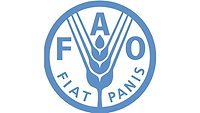The Emergence of Livestock-Associated MRSA Bears Watching

Staphylococcus aureus is a large family of Gram-positive bacteria with many genetically diverse strains that can produce skin and systemic disease in people and are important foodborne pathogens. Indiscriminate use of antibiotics in human medicine probably has played a role in the emergence of methicillin-resistant Staphylococcus aureus (MRSA), which was detected first in Great Britain in 1961. Other factors, however, likely were involved.
While most often thought of as afflicting humans, MRSA strains also have been detected in livestock, including horses, cattle, goats, chickens, pigs and even dogs and cats. Humans are the source of some of these strains, but others are genetically distinct and have been designated livestock-associated MRSA. Well-designed longitudinal studies will be necessary to clarify the public health implications of the emergence of livestock-associated MRSA, which is complicated by the diversity of the strains isolated and the bidirectional nature of transmission of the bacteria between people and animals.
In a recent study of one industrial hog operation in North Carolina, for example, researchers concluded that farm workers and their families may have had an increased risk of skin and soft tissue infections caused by livestock-associated MRSA. The sample size for this study was small, however, and the determination of clinical disease in the workers was based on recall after they were shown pictures of typical MRSA lesions. Nevertheless, the risk of livestock-associated MRSA strains reverting to more pathogenic human strains after passing through people needs to be investigated.
After its appearance in Great Britain, what is known as hospital-acquired MRSA became the scourge of intensive care units and surgery suites in the late 1960s, causing fatal sepsis and contamination of incision sites. Admission to an intensive care unit, previous antibiotic exposure and exposure to a MRSA-carrier patient (one persistently shedding MRSA without disease) were all risk factors for hospital-acquired strains.
Another kind, community-acquired MRSA, emerged as an important infection in people somewhat later, at the turn of this century. Community-acquired strains differ genetically from hospital-acquired MRSA and usually are susceptible to more antibiotics. Risk factors for community-acquired MRSA include IV drug use, participation in close contact sports and crowded living conditions such as those existing in prisons, on military bases and in nursing homes.
The third variety of MRSA is the livestock-associated variety. Livestock-associated strains appear to be more diverse in the United States than in other parts of the world. Present evidence indicates that livestock-associated MRSA strains are less likely to be transmitted person-to-person and lack some of the virulence factors associated with hospital- and community-acquired MRSA; however, they can produce skin- and tissue-associated disease in humans similar to S. aureus or other strains of MRSA. So far, there have been no reported cases of foodborne intoxication in people from livestock-associated MRSA, possibly because most livestock-associated MRSA strains do not possess the enterotoxin gene that would allow them to cause foodborne illness in people.
The colonization of pigs with livestock-associated MRSA is widespread, and high rates have been detected in Europe, China and the United States. Some studies have found young pigs more likely to be positive for livestock-associated MRSA. Isolation rates in swine also are thought to increase with increased pig density. Livestock-associated MRSA has been found in exhausted air from pig houses, and studies in Germany have detected this strain for up to 350 meters (1,140 feet) downwind from houses and up to 500 meters (1,640 feet) on the surface of the soil. Pig farmers in Germany often harbor livestock-associated MRSA; however, colonization and disease with this strain in people away from the farm environment has been rarely detected.
As noted, longitudinal studies are necessary to clarify the public health implications of the emergence of livestock-associated MRSA. The risk of livestock-associated MRSA strains reverting to more pathogenic human strains after passing through people also must be investigated, with particular attention paid to the possibility of livestock-associated MRSA strains acquiring the enterotoxin gene that would allow them to cause foodborne illness in people.
James Wright, D.V.M., Ph.D., D.A.C.V.P.M., is a professor of public health in the Auburn University College of Veterinary Medicine. He is also a member of the Auburn University Food Systems Institute’s Food Defense Working Group and a contributor to the Food Defense Blog (www.aufsi.auburn.edu/fooddefense). He can be reached at wrighj3@auburn.edu.
Resources
1. www.mdpi.com/2079-6382/4/4/521/htm.
2. journals.plos.org/plospathogens/article?id=10.1371/journal.ppat.1004564.
Looking for a reprint of this article?
From high-res PDFs to custom plaques, order your copy today!








